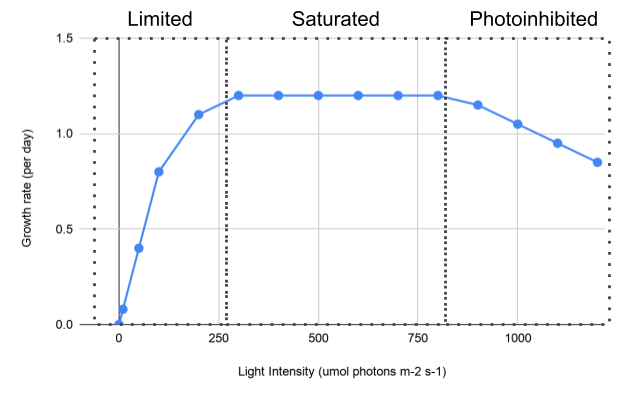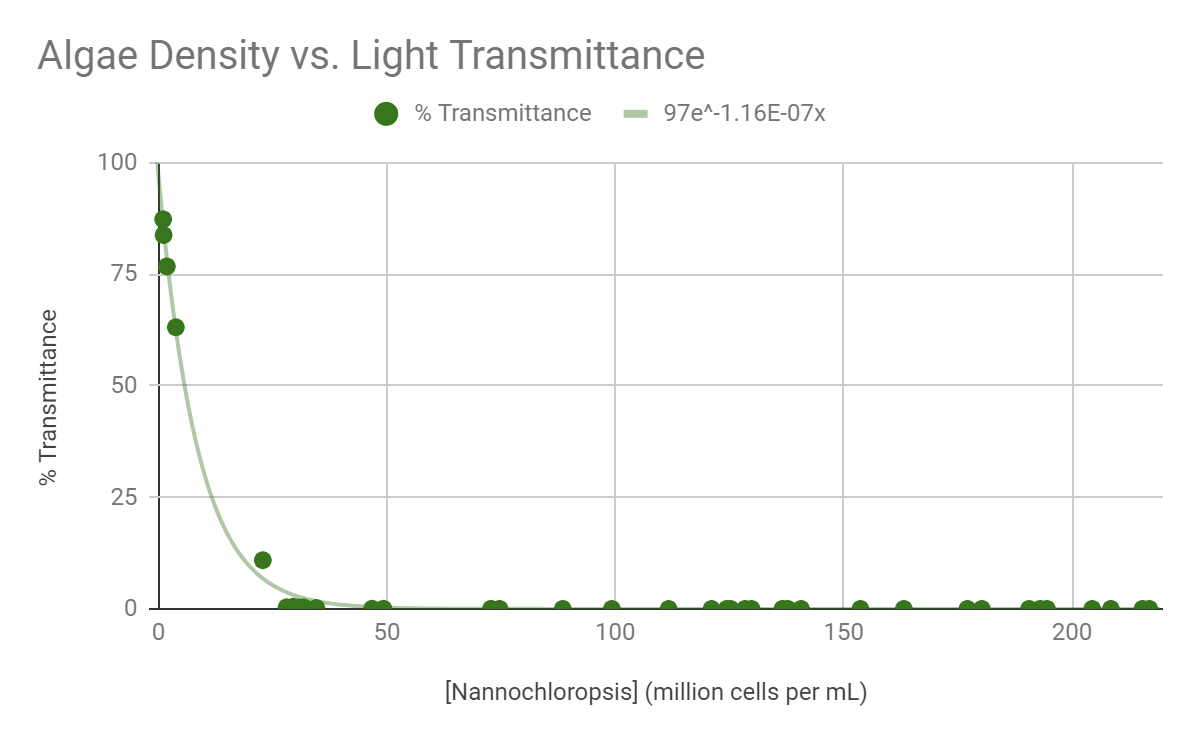June 15 2021
Light Intensity
Microalgae Growth – Light Intensity
If light is one of the key ingredients in photosynthesis, will more light always generate more productivity? Not exactly.
Microalgae growth tends to have a consistent relationship with light intensity. Though the actual growth rates and intensities for different points in this curve will vary depending on many factors the general shape is consistent (Fig 1).
At low light intensities, algae will be limited by light availability and increasing the light will increase microalgae growth. At some point, increasing the light further will have no effect on growth rate as extra light added in this saturated section of the curve will not be used. And at some point beyond that, extra light can start to cause damage to the cells (photoinhibition) and actually reduce growth rate.

An important caveat for experiments like these is that they are usually done with small culture volumes (e.g. 50 mL tubes). In larger scale algae cultures, the light environment is much more complicated!
As light travels through an algae culture it is absorbed. This decrease in light depends on the concentration of algae cells present and on the “path length” – the distance from the light source to an algae cell. As you can see from my PBR 1250L Nannochloropsis oculata data this decrease in light happens exponentially with concentration (Fig 4).

This means that when a culture is freshly inoculated lots of the light will pass through, deep into the culture. But by the time the culture has gotten a bit denser (e.g. 30 million cells per mL), very little light will penetrate deeper than the first few centimeters.
By mixing your culture and increasing the ratio of lit surface area to culture volume it is possible to increase the fraction of cells that get enough light for photosynthesis. In the PBR 1250 L we do this by having high surface area tank geometry as well continuous mixing of the culture.
Another light consideration is acclimation – what are your cells used to? Cells that are used to growing in high light can tolerate high light, while cells that are used to low light will be more easily photoinhibited.

So what is the best way to determine how much light to use for your algae culture? Experiment! Start low (<150 umol photons m2 s-1) to avoid photoinhibition, especially if you have just diluted or inoculated. Try turning the lights up a little bit at a time as your culture gets denser, and acclimates to its new conditions. And keep an eye on how it responds to the light increase. In the PBR 1250L you can make adjustments to the conditions and watch the growth parameters change in real time.
